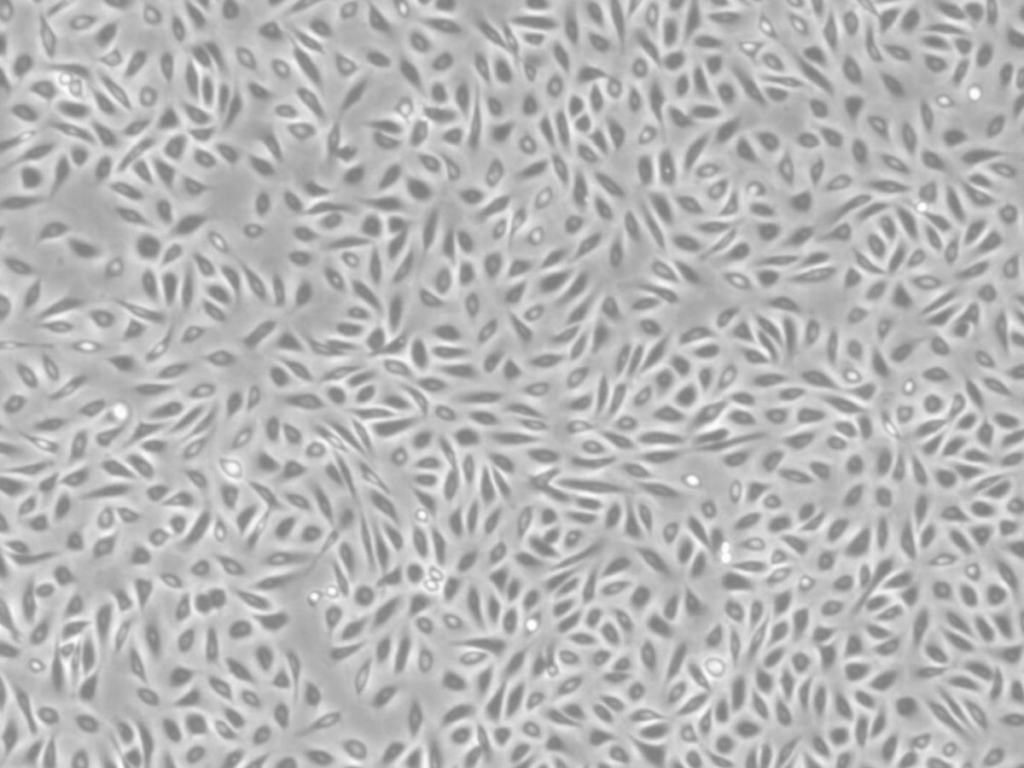The urinary tract is the most vulnerable site for bacterial infection and urinary tract infection (UTI) affects millions of people around the world each year. The bladder epithelium consists of urothelial cells that play a vital role in maintaining a strong barrier against bacterial invasion. However, these cells are highly variable between individual cultures and are not consistently available. The spontaneously immortalised cell line HBLAK derived from a primary culture of uroepithelial cells was first characterised by Hoffmann et al. HBLAK has become a more conveniently available model for urological research than primary urothelial cultures.
The highlights of CELLnTEC’s human bladder long-term epithelial cells HBLAK include:
- convenience of long-term cell growth without senescence
- at least six months growth post-delivery
- supplied at approx. passage 10
- cryopreserved in a fully-defined medium
- ability to complete 2D/3D differentiation and organoid formation
Applications of HBLAK:
Wu et al. and Lang et al. cultured HBLAK in the CnT-PR medium that establishes as many proliferative progenitors as possible in culture. They further used the CnT-PR-D medium for 2D differentiation on HBLAK.
Most of the available biomimetic in vitro models of the human urothelium show a short lifespan in a urine environment. Jafari et al. established human 3D bladder cultures with HBLAK, CnT-PR, and CnT-PR-3D. They reported an advanced barrier-forming, 100% urine-tolerant, 3D urothelial microtissue model that can be used to elucidate UTI host-pathogen interactions.
Lau et al. cultured HBLAK cells in CnT-PR and subsequently used the CnT-PR-3D medium to create 3D stratified human bladder organoids. Their 3D model mimicked the natural histological structure of the bladder and was used to assess the therapeutic potential of antibiotic-loaded microparticles to effectively treat chronic UTIs.
CnT-PR can also be used for urothelial cells reprogrammed from adult fibroblasts, as shown by Inoue et al. The established technology to convert somatic cells into functional tissue cells provides a promising solution for regenerative therapy for UTIs.

CELLnTEC’s Products Cited for Urological Research:
- Bladder Epithelium Progenitors: HBLAK
- Epithelial Proliferation Medium: CnT-PR
- Epithelial 2D Differentiation Medium: CnT-PR-D
- Epithelial 3D Differentiation Medium: CnT-PR-3D
- Defined, Animal Component-free Freezing Medium: CnT-CRYO-50
Originally posted by CELLnTEC on: https://mailchi.mp/cellntec/generate-bladder-2d3d-models-with-long-term-cell-line-hblak-for-advanced-urological-research
Caltag Medsystems is the distributor of CELLnTEC products in the UK and Ireland. If you have any questions about these products, please contact us.
